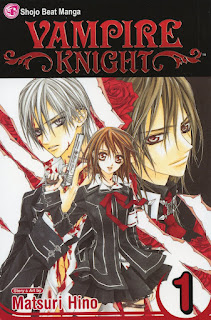 Synopsis: With one year of high school left, Yano and Nana are making decisions that will greatly impact the future. Yano's mother has decided to get a divorce and move to Tokyo. Torn between going to Tokyo to care for his mother, or staying in Hokkaido to finish high school with Nana, Yano knows either decision will leave him with regrets. College choices only emphasize the uncertainty of the couple's future. Despite that, Nana and Yano's emotions still flow strongly. When Yano comes to a final decision, it only deepens Nana's devotion.
Synopsis: With one year of high school left, Yano and Nana are making decisions that will greatly impact the future. Yano's mother has decided to get a divorce and move to Tokyo. Torn between going to Tokyo to care for his mother, or staying in Hokkaido to finish high school with Nana, Yano knows either decision will leave him with regrets. College choices only emphasize the uncertainty of the couple's future. Despite that, Nana and Yano's emotions still flow strongly. When Yano comes to a final decision, it only deepens Nana's devotion.Review: Opening this volume, I began watching scenes from my high school days unfold before my very eyes. I've always wanted to write a story using the experiences I had with my first love. In We Were There volume 8, Yuki Obata has done it for me, and exceptionally well. She portrays the couple's indecisive agony of pending separation. The special secluded trip to spend those last precious moments together. Then there's the farewell scene on the train platform, where the boy leaves the girl full of hopeful devotion and grief at the same time. Obata has got the emotional naivety of young love nailed.
Excluding my own personal connections, this volume has some memorable moments of characterization. Motoharu Yano's growth in maturity shines as he struggles with difficult decisions. Should he leave for his last year of high school? He is forced to choose between his fragile mother, who needs caring for herself, or Nana, whom he loves and cares for deeply and fears losing. It's a no win situation, and either choice will leave him unhappy. How does he cope with the outcomes? In later scenes it becomes apparent how much he really does love Nana.
Masafumi Takeuchi, Yano's best friend who also pines for Nana, plays the responsible friend in this volume. Supporting both Yano and Nana at times, he's there to be the confidant and adviser. Going so far as to point out to Yano that it will be he, not Yano, that will be helping Nana study, and taking her for coffee, if he leaves. He even encourages Nana to tell Yano how she really feels; that she doesn't want him to leave. Of the two boys, it appears Takeuchi will be the one that remains stable in Nana's day to day life.
Nana Takahashi's reactions to events characterize the typical emotions of a 17 year old girl. Her indecisiveness about her feelings on Yano's decision to leave or not, along with her selfless devotion to Yano exemplifies young love. Her naivety on how events will come to pass, and her belief that their love will endure, perfectly personifies the heart of a teen girl in love. Even in the flash forward scene, where Nana is shown at age 21 in college, we see how such emotions linger through the passage of time. A fact that rings true for anyone who has ever parted while in love. The conclusion of the volume left me speculating what has happened in the time that passed. Even now, I'm still trying to imagine how volume 9 will unfold.
Artistically, We Were There volume 8 is a pleasure to read. Smooth pacing, balanced layouts, and stylized characters only add to the overall impact of the story. While the more serious moments are drawn in a more realistic style for effect, the day to day or lighter moments are drawn more abstract, or cartoonish. The English translation does not interfere with the story telling, and there are a few editor's notes included in the back for more obscure references.
We Were There is a slice of life shojo that treads the path of a more realistic look at relationships. Even with some typical cliches, the story feels fresh because Obata isn't afraid to address the awkward and even unhappier aspects of loving someone no matter his or her flaws. Though volumes 1-7 were deeply engaging, volume 8 left a deeper impression upon me since it paralleled some of my own personal experiences. It is because of this mangaka's ability to connect her characters with the audience, that this story has resonated with so many. I highly recommend this series.
Romance Rating: Steamy.
Media Status: We Were There is available in English from Viz media. Volume 9 will be released March 2, 2010. A 26 episode television anime was aired in Japan in 2006. The series known as Bokura ga Ita in Japanese, is currently serialized in Betsucomi magazine.























